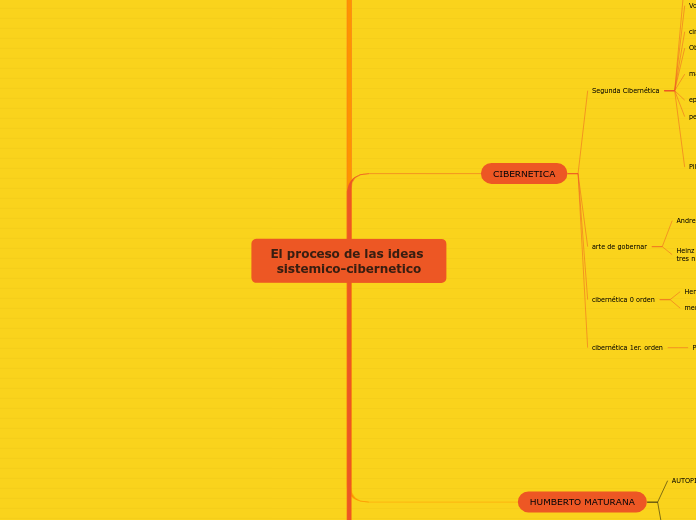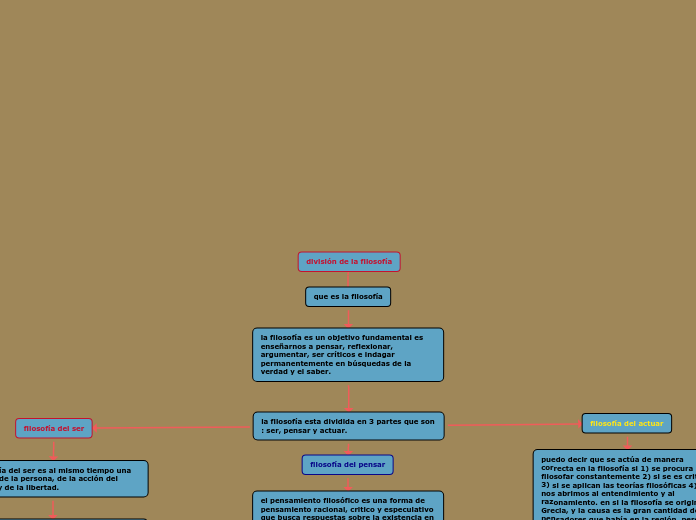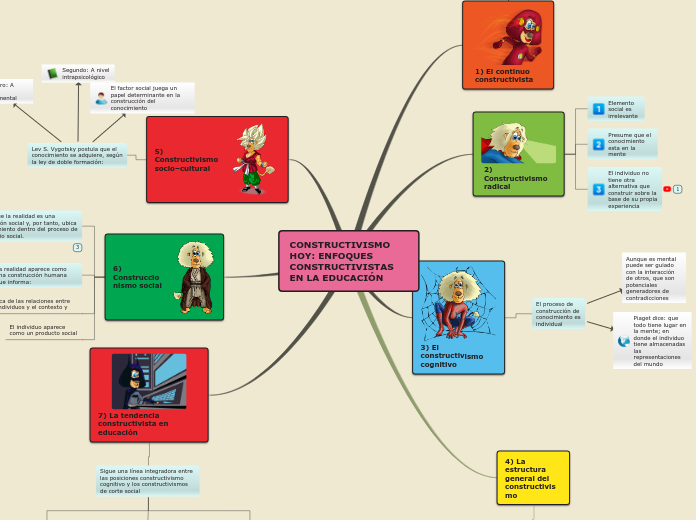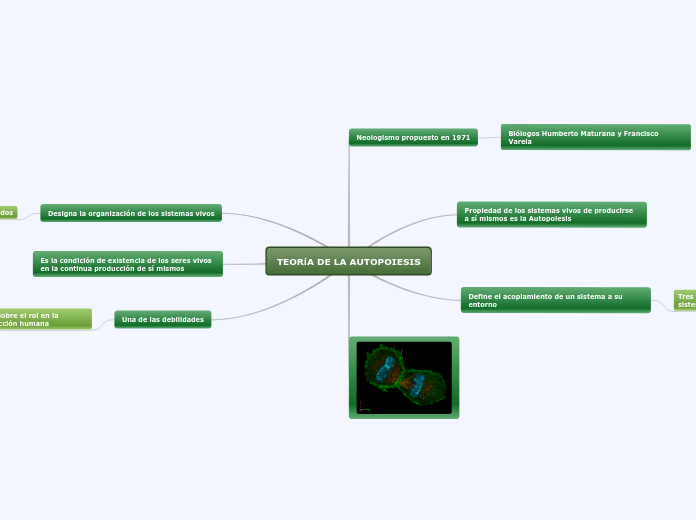El proceso de las ideas sistemico-cibernetico
To name your story, you have to think about the overall message and what you want your audience to understand from the story. Also, make it relevant and easy to remember.
BRINGFORTHISMO
The ending of a story is essential. We all know that if the ending is weak, what happened before loses its importance. So make it unpredictable, but fair. A resolved ending answers all the questions and ties up any loose threads from the plot.
Segunda Ley Termodinámica
energía no se transforma sino que se gasta en el proceso de transformación.
Principio a través del caos
Sistemas evolución por saltos continuos hacia
una nueva organización
principio Complementariedad
Distintos puntos son complementarios
Principio de Determinación
Observador incluido en lo que observa
Medida exacta es incierta
La Epistemología
This is the closure section of the story.
See examples of possible outcomes below:
- all problems have been solved
- it's clear how each one of your characters ends up
- your main character is transformed by the challenge
Proceso de:
Try answering these questions to come up with a closure:
- Have all the problems been solved?
- Is there a clear picture of what happens with each character in the story?
- Has the challenge transformed your main character?
- How do the characters feel in the end?
Mantener experiencia
Construir
Conocer
Construcción tiene que acoplarse experencialmente con su medio
This is the moment when the main character surpasses the last obstacle and finally faces their greatest challenge.
The climax usually follows one of these patterns:
- realization
- resolution
- choice
Type in your answer.
CONSTRUCTIVISMO
Epistemología
De adentro hacia afuera
¿Cómo es que conocemos?
noción de descubrimiento
construccion y invencion
Raices
Kant
Gian batista
Platón
HUMBERTO MATURANA
imposibilidad de distinguir la experiencia
verdad y error
red circular cerrada de cambios
de relaciones de actividad neural
percepcion e ilusion
AUTOPIESIS
MATURANA
Uno es el camino explicativo de la objetividad
sin paréntesis.
Subtopic
Todo acto de conocer trae un mundo a la mano
experiencia del observar
Determinismo estructural
organización que define y construye a los seres vivos
CIBERNETICA
The middle of the story is where you add layers of complications that will lead to the end. Reveal more about the character's journey. Did their personality go through changes? How did they overcome the challenges? And as you build up the story’s central conflict, make it more personal to that character. Also, from the middle act, you have to lead into the final act.
cibernética 1er. orden
Primera cibernetica
Warren MC culloch
epistemología experimental
comunicación dentro de la observación
entre el observador y el medio
Walter canon
concepto de homeostasis
Heron
organismo es igual a sistema
cibernética 0 orden
There wouldn't be any tension and excitement in your story if there weren't any obstacles in your character's way.
mecanismo de retroalimentación negativa
Heron de Alejandría-sistémica cibernético
A story is nothing more than a character overcoming a series of difficulties to reach the desired goal. Obstacles usually create suspense and conflict. In overcoming obstacles, there is growth: weak becomes strong; hatred turns into love; sadness into happiness; wrong into right; lies into truth; or evil becomes good.
See a few examples below:
- stopping a meteor
- finding a killer
- finding love
arte de gobernar
Your character(s) need(s) motivation in order to solve the challenge(s).
Heinz Von Foerster
tres niveles de complejidad
Secondary characters might also have motives that lead them to cross paths with the main character or which might trigger them to help the main character.
Cibernética 2 orden- reflexión sobre la reflexion
Cibernética 1 orden- reflexión
(Norbert Wiener 1948)
Cibernética 0 orden- implícita
Andre- marie ampere 1834
Why does your character need to confront this challenge? What does he/she expect to accomplish by solving it?
See a few examples:
- will marry in 3 days
- can fix the mistakes of the past
ciencia de la pauta y organización
Segunda Cibernética
Each story has a main character and that character usually needs to solve a problem or challenge. The character's challenge is the one that creates tension throughout the story.
Pilares fundamentales
Type in any other challenges which other characters in the story need to face.
Francisco Varela
Humberto Maturana
Heinz Von Foerster
Warren MC. Culloch
ludwing wittgenstein
pensamiento científico
objetividad fundamental en la ciencia
epistemología tradicional
determina lo que vemos
magoroh maruyama (1963)
In most stories, there are 3 challenges. The number 3 is a mystical number symbolizing completeness. Try to come up with interesting challenges with which your character needs to struggle.
See a few examples below:
- turns into a werewolf at night
- is sent back in time
Morfogénesis
variabilidad del sistema
Morfostasis
mantenimiento de la constancia
mecanismos de retroalimentación negativa
Observación del Observador
circularidad y retroalimentación
Von Foerster
conocimiento inseparable de la acción
Si decides ver aprende a actuar
Jean Piaget
Terapia sistémica
Gregory Bateson
LA EPISTEMOLOGIA ES EL ESTUDIO
otras características
decidir
pensar
conocer
limites necesarios
INTRODUCCION A LA
TEORIA GENERAL DE LOS SISTEMAS
In the beginning of the story (or the exposition), you will need to introduce the setting and characters. You might also want to introduce the main conflict. This part of the story is important because it gives the reader necessary background information and maybe even a first insight into a character’s personality.
TEORIA DE COMUNICACION
entendida como intercambio de significados entre individuos
para elaborar la teoría de la comunicación
propone considerar a la familia como sistema homeostático
Pragmática de la comunicación humana
sus autores son Paul watzalawick,Don Jakson y janet beavin
se refieren a la comunicación como comportamientos o conductas que afectan a las personas en su interacción.
Recursividad
solipsismo
Feedback
Acuna el termino cimogenesis
Procesos de diferenciación en las normas del comportamiento individual
dentro de los grupos sociales podría existir un orden interno auto-equilibrador.
propuso la noción de contexto
como elemento fundamental de toda comunicación y significación.
La pauta que conecta
relaciones
formas
configuracion
The setting (time & place) of a story can change throughout the plot.
El Sistema Abierto
Sensory details include sight, sound, touch, smell, and taste. These details are important because they create depth in your setting.
See a few examples below:
- the smell of fresh bread
- the scent of freshly cut grass
- rain falling onto the windshield etc.
organización
determinado
independiente
Define los sistemas como
The weather is an important element in your story because it can highly influence the ambiance and the mood of the characters.
el concepto de homeostasis entre entradas y salidas lo que permite cambios continuos.
The most affected character is the main character. Write down here if he/she is affected by these weather conditions in any way. For example, if they lost a family member or their home during a hurricane, etc.
complejos de elementos de interacción
Does your story include catastrophic weather? See a few suggestions below or add your own:
- hurricane, earthquake, storm, etc
establece distinción entre sistemas abiertos y cerrados
Toda conceptualización parte de lo percibido
The time of the story can also change. It can describe the event of a single day or can include an entire year's plot. Anyway, don't forget to mention it.
palabra
Acción
concepto
Idea
Propone encontrar las correspondencias o isomorfismos entre sistemas de todo tipo.
Your story can take place wherever your imagination will take you to.
For example: in an elevator, in an enchanted forest, etc. Don't forget to give details of the environment each time the setting changes, otherwise, the story can be confusing. Also, mention the seasons as each of them has unique weather and events.
el isomorfismo entre modelos permite aplicar las mismas características
El concepto de sistema ya existía en el pensamiento de Aristóteles.
Characters are essential to a good story. Usually, the protagonist(s) is/are the most affected by the plot. Introduce a character by focusing on their actions, interests, and occupation, as the physical appearance doesn't make a difference in most cases.
Empieza con:
Type in the name of your character.
GREGORY BATESON
Add other qualities/attributes of the character.
LUDWING VON BERTALANFFY
Choose the type of your chacter:
Protagonist (main character)Antagonist (main character's opponent)Flat (stereotypical character)Round (his/ her personality develops throughout the story)Static (doesn't evolve as a person throughout the story)Dynamic (dramatical change in personality)Confidant (the main character trusts him/ her)Foil (contrasting character who enhances the personality of another character)Other










